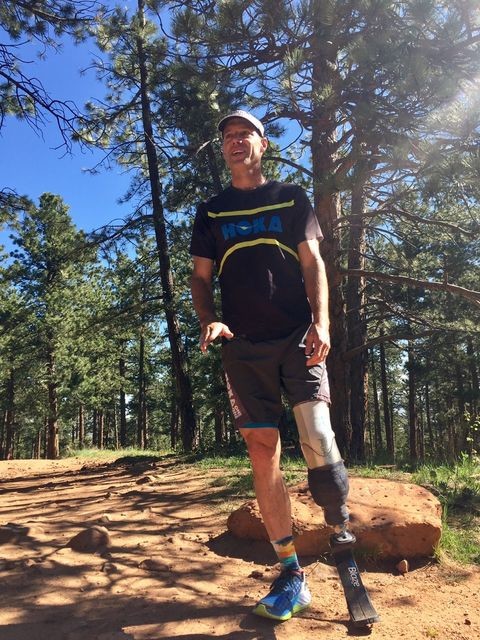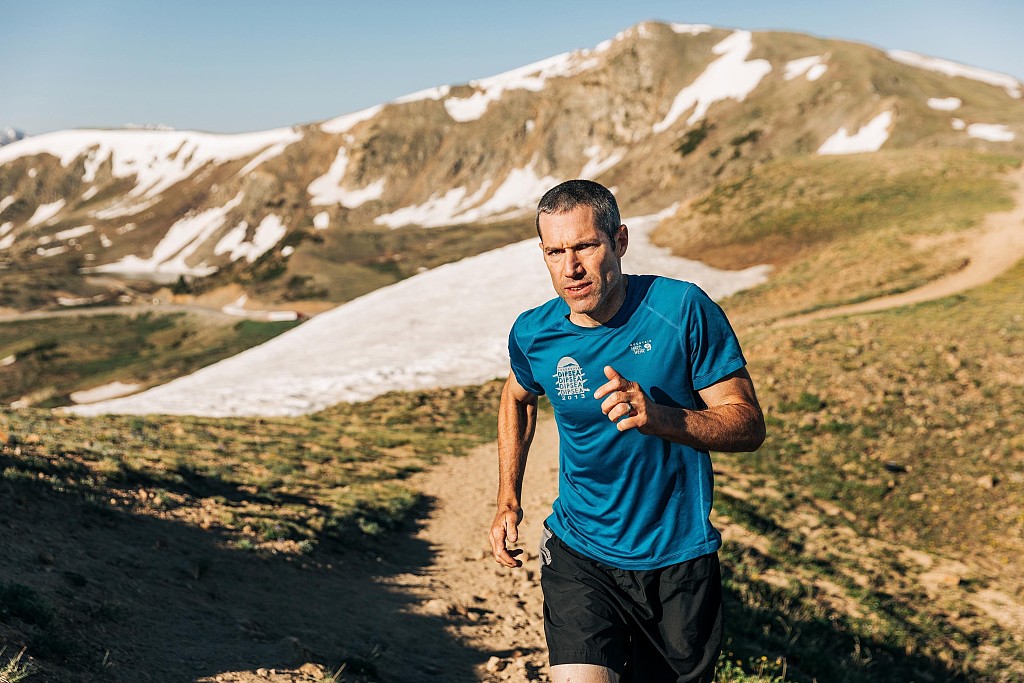Running News Daily
Running News Daily is edited by Bob Anderson. Send your news items to bob@mybestruns.com Advertising opportunities available. Train the Kenyan Way at KATA Kenya and Portugal owned and operated by Bob Anderson. Be sure to catch our movie A Long Run the movie KATA Running Camps and KATA Potato Farms - 31 now open in Kenya! https://kata.ke/
Index to Daily Posts · Sign Up For Updates · Run The World Feed
49-Year-Old Ultrarunner Dave Mackey Won't Back Down
Dave Mackey was the first person to run the Leadville Trail 100 Run with a prosthetic leg
The 49-year-old physician assistant spent those two decades putting together a stellar ultrarunning career, earning national championships in 50K, 50-mile, and 100K distances. He set the record for the Grand Canyon Rim-to-Rim-to-Rim run in 2007 and was named Ultrarunner of the Year twice by USA Track and Field. His only injury during that time was a rolled ankle in 2007 that made him rest for a few weeks.
“I’ve always been lucky with injuries,” Mackey says from his home in Boulder, Colorado. “Well, except for falling off a mountain.”

In 2015, Mackey was running 8,459-foot Bear Peak in the Rocky Mountains’ Front Range when he decided to scramble down a series of boulders off the backside of the summit. An experienced rock climber, he had taken the route plenty of times before. But during his descent, a boulder jostled loose, and he fell 50 feet, breaking his left tibia in eight places. For a year after the accident, Mackey and his surgeons were hopeful he would keep the leg. But after suffering constant pain from scar tissue and low-grade infections, it became obvious that it would never fully heal. Mackey says the decision to amputate was an easy one.
“It was about quality of life,” he says. In addition to being a dedicated ultrarunner, Mackey is also an accomplished adventure racer, skier, and mountain biker. “Keeping my leg would’ve held me back for years, if not my whole life,” he says.
“But I knew after the amputation I would run again. People do amazing things with one leg, or no legs for that matter.”
After the surgery, Mackey spent almost a year adjusting, learning how to walk and run again while also undergoing multiple fittings for his prosthetic leg due to shrinking muscles in the residual limb. But he wasn’t down for long. Less than two years after his surgery, Mackey completed the Leadman Series, a succession of six races over the course of a summer that includes the legendary Leadville Trail 100 Run and Leadville Trail 100 MTB.
“The vast majority of people who lose a leg never work again,” Mackey says. “They never establish the same mobility as they had before. I’m really fortunate, and I was motivated.”

Finishing the Leadman Series was just the beginning for Mackey, who has largely resumed his old routine since losing his leg. He runs every day with a blade prosthetic—there’s an 11-mile route he likes to knock out in the morning before sending his kids off to school—he mountain-bikes regularly, and he skis with his family during the winter. Although Mackey figures he’s half as fast on rocky trails now, it’s all relative. Last year he finished 12th in the Leadman Series, just over seven hours behind the series winner’s accumulated time for all six races. This year he ran the Leadville Trail 100 in 25 hours, 54 minutes, roughly six hours slower than his 2014 time.
Still, he placed 98th overall out of 841 runners and was the first runner to ever finish the race with a prosthetic leg. “The more technical the terrain, the slower I have to go,” Mackey says. “Rocks that are smaller than a fist are easy to work through, but with the baby-head-size rocks, the blade can roll more easily. I have to watch my steps more.”
Mackey also says he’s enjoying the training process more than he ever did before. “I just want to get out there and make the most of it,” he says.
“I’m more appreciative now of every individual run or ride. Or skiing with my kids. It feels so good. With the accident I had, I could’ve died.”
Recovery has been a fact of life since Mackey’s accident. He’s had more than 13 surgeries during the last four years. When I talk to him, he’s fresh off a three-hour mountain-bike ride, slowly working his way back into “normal” life after having two screws removed from his leg two weeks earlier. “It can be hard,” Mackey says. “Taking time off in your forties is different than taking time off in your twenties. You don’t necessarily bounce back like you used to. But this whole process has taught me patience. You have to stay patient so you don’t get hurt again. But if you’re motivated, you can come back.”
Although Mackey is still getting after it postaccident, his motivation to keep moving has changed slightly. At one time, pre-accident, it was pushing himself to the brink of collapse in order to win races and crush records.
“You feel like a train wreck one moment, then an hour or two later you feel great, because your body cycles through it,” he says. But while he continues to love the physical challenge of ultras, it’s not the podium that motivates him these days. It’s the process itself.
“Being in the outdoors is what keeps me going,” Mackey says. “The longer the trail run, the more I get out of it. It takes energy to make it happen, but the net return of those runs gives me more energy for everything else. It gives me a better attitude, a better perspective. Being outside, moving, it’s like therapy.”
Login to leave a comment
Leadville Trail 100 Run
The legendary “Race Across The Sky” 100-mile run is where it all started back in 1983. This is it. The race where legends are created and limits are tested. One hundred miles of extreme Colorado Rockies terrain — from elevations of 9,200 to 12,600 feet. You will give the mountain respect, and earn respect from all. ...
more...




